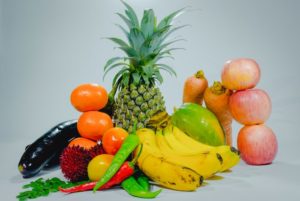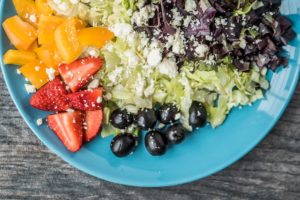Is sciatica pain preventing you from enjoying your social life, relationship and routine activities?
 Learn from these case studies how Hayley, Franco, Elizabeth Tiffany, Jan, Michaela, Emma, W. T. Police officer, Huw or Dr Christian NHS completely transform their health and got rid of their sciatica pain, herniated discs and lower back pain.
Learn from these case studies how Hayley, Franco, Elizabeth Tiffany, Jan, Michaela, Emma, W. T. Police officer, Huw or Dr Christian NHS completely transform their health and got rid of their sciatica pain, herniated discs and lower back pain.
Research shows that with a worrisome rate of prevalence all over the globe, in the UK, the sciatica pain prevalence stands at 3.1% in men and 1.3% in women.[1]
Although debilitating, proper nutrition can help you slow down or in some cases stop disc degeneration and together with a laser sharp customised sciatica rehab programme with easy successfully manage and help you overcome your pain symptoms.
Yes!
Nutrition can help in managing sciatica pain.
It is not just about making customised food choices but also about having a balanced diet. [2]
Sciatica pain typically arises due to an inflammation or irritation of the sciatic nerve that is responsible for most of your activities.
• Did you know that compression of the nerve due to mechanical causes and inflammatory mediators released from damaged discs in your vertebra can result in repetitive and intense sciatica pain?
Research shows that even the slightest movement of bending, coughing or sneezing can put you through unbearable pain.[1]
Chronic pain is debilitating and affects the quality of life.
A poor, imbalanced or suboptimal diet has been proven as a risk factor for pain.
Nutrition severely affects inflammatory chemicals in the body and helps in having a healthy spine.
Research shows that a balanced diet with an optimum amount of macro and micronutrients is a blessing in managing pain with a conservative approach.[3]
Of course, you will need to put the work in and commit to the quality of life you want to enjoy.
But, with assessment based nutrition choices and a laser sharp exercise rehab programme our case studies clearly demonstrates that your sciatica pain will no longer hold you back as you do your routine activities in the busy city of London.
Keen to get started?
BOOK YOUR FREE CONSULTATION NOW!Just remember that proper nutrition works wonders in pain management as it helps your body regenerate faster, reduces weight levels predictably and naturally, reduces pressure on your discs and reduces your body inflammation.
Anti-Inflammatory Foods to Support Sciatica Pain Relief
 Did you know that your food choices can help manage pain?
Did you know that your food choices can help manage pain?
Moreover, with my long-term expertise in back rehab exercise and nutrition, I can help you make very effective food choices in managing your sciatica pain.
Anti-inflammatory foods: Your saviour
The anti-inflammatory diet is your weapon in the war against pain.[4]
If you don’t have any allergies and food sensitivities here are just some anti-inflammatory foods for sciatica pain relief:
• Enrich with omega-3: Earlier fatty fish (salmon, mackerel, sardines) were considered to be the only source of omega-3 fatty acids.[5,6]
But I know, you are worried about the heavy metal contamination in fish and research shows that you are 100% right to be concerned about the negative effects of heavy metal accumulation in your organs and tissues resulted from fish consumption.[7]
This is where research helps.
Research shows that vegan source of omega-3 fatty acids from algae successfully inhibit the inflammatory cascade in your body.[8]
• The miracle of nuts and seeds: Nuts and seeds are rich sources of essential fatty acids, arginine and antioxidants.
Walnuts have these three ingredients that supress inflammation.
Chia seeds and flax seeds with their rich alfa linoleic acid content are a boon in managing inflammation by reportedly lowering C-reactive protein in the blood, which is an inflammatory marker.[6]
• The brighter side of dark greens: The leafy veggies, dark leafy greens – spinach, kale and collard greens have rich fibre content and also reduce inflammatory mediators.[6]
• The power of Berries: Berries such as blueberries, strawberries, and raspberries, rich in anthocyanins, and polyphenols and having tremendous antioxidant potential are a must in your diet as anti-inflammatory foods.[9,10]
• The Mediterranean oils: Olive oil and avocado oil are rich in antioxidants and monounsaturated fatty acids (MUFA) that have anti-inflammatory effects.[6]
Foods That Promote Nerve Health and Regeneration
Several strategies are available to promote nerve health.
 Regenerate and rejuvenate your nerves and have a healthy spine with the following foods in your balanced diet:
Regenerate and rejuvenate your nerves and have a healthy spine with the following foods in your balanced diet:
• The fibre-rich grains: Healthy diet recommends the use of whole grains quinoa, buckwheat, brown rice, and whole wheat bread as a part of the diet for nerve regeneration.[11]
• Power-packed Legumes: Legumes (lentils, chickpeas, black beans) play a pivotal role in managing inflammation. Some legumes and beans also have a neuroprotective effect.[6,12]
• Cut the red meat: In love with the meat? Although lean protein (chicken, turkey, tofu) were recommended earlier, research shows that we now have Tofu as a better source of high quality, high nutrition protein-source that gives you neuroprotective benefits too.[13]
• Go nuts and seeds: Nuts and seeds (sunflower seeds, almonds, pumpkin seeds) have a calming effect on nerves. You may utilise their antioxidant and anti-inflammatory potential to the fullest.[14]
• Get the dairy home: Earlier dairy products (milk, yoghurt, cheese) were used to reduce oxidative radicals that may cause nerve inflammation.[6,15]
However, many people are allergic to dairy.
Nothing to worry about – there are much better alternatives!
Research shows that you will get more anti-inflammatory and antioxidant benefits from plant-based milk like almond milk or soy milk.[16]
• Keen to get started?
For tailor-made balanced diet to manage your sciatica pain click here.
BOOK YOUR FREE CONSULTATION NOW!Foods to Avoid with Sciatica Pain
 The inflammatory chemicals released at the site of the sciatica nerve result in pain, foods that add to inflammation are hence a big NO.
The inflammatory chemicals released at the site of the sciatica nerve result in pain, foods that add to inflammation are hence a big NO.
Here is a list of foods to avoid:
• Sweet outside but scary inside: Sugary foods candy and pastries and beverages containing soda are a perfect recipe to trigger inflammation and hence detrimental to health.
Research show that is better to avoid these if you have sciatica pain and other inflammatory conditions.[17]
• If it’s fried it’s bad: Fried foods such as French fries, and fried chicken are an invitation to shoot up inflammatory markers.
• Refined ….not so fine: White bread, pasta, and pastries are made from refined flour and WILL enhance your inflammation levels.
• Processed but dangerous: Processed meats (hot dogs, sausage, deli meat) are precursors of inflammation and affect health adversely.[18]
• Not so cool – Alcohol and caffeine: Research shows that alcohol contributes to neurodegenerative effects [19] and inflammation while excessive caffeine is of no good.
Benefits of a Healthy Diet for Managing Sciatica Pain
Sciatica pain is chronic spinal pain[20].
A healthy anti-inflammatory diet rich in micronutrients and omega-3 fatty acids is an easy and safe way to deal with sciatica pain.
A balanced diet reduces pain and inflammation by interfering with the body’s inflammatory pathways.
The constituents in food through different mechanisms as follows help in managing pain.[20]
• Reduce inflammation by acting on inflammatory mediators.
• Have neuroprotective action and improves nerve function.
• Calcium and vitamin D-rich food show increased bone density.
• A healthy diet shows improved overall health and well-being.
Conclusion:
Living with sciatica pain is challenging.
It affects the overall quality of life.
However, prompt, and correct diagnosis when teamed with expertise in customised back rehab exercise and nutrition plans provides you a sustainable, very effective and holistic solution.
Jazz is here to create personalised, goal-specific solutions!
Take the example of two colleagues at a workplace having sciatica pain.
Will they have the same kind of health?
Definitely NO!
Hence the dietary plans and rehabilitation exercises will change from person-to-person. Avoiding certain foods that trigger inflammation can help however, this alone is not enough.
Customization is my key as Jazz will create a very effective diet that takes care of your body regeneration and pain.
Tailor-made nutrition plan is a revolution in managing sciatica pain.
So, how all these things can change for you?
Based on your comprehensive assessment.
Jazz will help you predictably recover from stress, body pains, and back and spine injuries, rebuilding yourself.
As all Jazz client you will enjoy your customised, innovative, and effective lower back pain transformations.
Customised herniated discs rehab and sciatica recovery transformation programmes alongside medically supervised nutrition consultations and very effective specialist food programmes are holistic and always the way to go!
Who is Jazz Alessi?
Jazz is London’s best Back Pain Rehab Specialist and Elite Personal Trainer with long-term expertise in spine degeneration, herniated disc, spine regeneration, healthy spine reconstruction through customised exercise and sciatica pain.
Jazz can help you transform your unbearable and chronic sciatica pain by creating a very effective and balanced diet and exercise rehab programme which helps you control inflammation, reduce disc degeneration, stabilises your body structures and regenerate your body in an accelerated mood.
He will guide you in your every step in managing the sciatica pain so that you can move towards life without pain when you feel strong, agile and happy and are able to enjoy your daily routine.
Keen to start moving forward ?
BOOK YOUR FREE CONSULTATION NOW!
FAQs
1. Can nutrition alone cure sciatica pain?
No, Nutrition with customised exercises and back injury rehabilitation approach can help you successfully manage your sciatica pain.
2. Are there any foods that can directly cause sciatica pain?
Certain foods can trigger inflammatory chemicals in the body and cause spine degeneration and sciatica pain.
3. Can supplements help alleviate sciatica pain?
Selected supplements with a customised healthy diet and selected sciatica rehab exercise can successfully alleviate sciatica pain.
4. Is it necessary to follow a strict diet to manage sciatica pain?
Yes, strict adherence to the diet can help you manage sciatica pain very effectively and you will feel much better overall.
5. 5. Can drinking water help alleviate sciatica pain?
Not directly, but water will flush out toxins that sometimes could trigger inflammation and pain. However, water intakes are very important for your health – make sure that you always stay hydrated.
References:
1. Lewis, R.; Williams, N.H.; Matar, H.E.; Din, N.; Fitzsimmons, D.; Phillips, C.; Jones, M.; Sutton, A.; Burton, A.K.; Nafees, S. The clinical effectiveness and cost effectiveness of management strategies for sciatica: systematic review and economic model. Health Technology Assessment 2011, 15, 1-434, doi:https://www.ncbi.nlm.nih.gov/books/NBK99305/.
2. Zick, S.M.; Murphy, S.L.; Colacino, J. Association of chronic spinal pain with diet quality. Pain reports 2020, 5, doi:https://www.ncbi.nlm.nih.gov/pmc/articles/PMC7431251/.
3. Philpot, U.; Johnson, M.I. Diet therapy in the management of chronic pain: better diet less pain? 2019, 9, 335-338, doi:https://www.futuremedicine.com/doi/10.2217/pmt-2019-0014.
4. Zhu, F.; Du, B.; Xu, B. Anti-inflammatory effects of phytochemicals from fruits, vegetables, and food legumes: A review. Critical reviews in food science and nutrition 2018, 58, 1260-1270, doi:https://pubmed.ncbi.nlm.nih.gov/28605204/.
5. Calder, P.C. Marine omega-3 fatty acids and inflammatory processes: Effects, mechanisms and clinical relevance. Biochimica et Biophysica Acta (BBA)-Molecular and Cell Biology of Lipids 2015, 1851, 469-484, doi:https://pubmed.ncbi.nlm.nih.gov/25149823/.
6. Rondanelli, M.; Faliva, M.A.; Miccono, A.; Naso, M.; Nichetti, M.; Riva, A.; Guerriero, F.; De Gregori, M.; Peroni, G.; Perna, S. Food pyramid for subjects with chronic pain: foods and dietary constituents as anti-inflammatory and antioxidant agents. Nutrition research reviews 2018, 31, 131-151, doi:https://pubmed.ncbi.nlm.nih.gov/29679994/.
7. Knowles, T.G.; Farrington, D.; Kestin, S.C. Mercury in UK imported fish and shellfish and UK-farmed fish and their products. Food additives and contaminants 2003, 20, 813-818, doi:10.1080/0265203031000152398.
8. Perdana, B.A.; Chaidir, Z.; Kusnanda, A.J.; Dharma, A.; Zakaria, I.J.; Syafrizayanti; Bayu, A.; Putra, M.Y. Omega-3 fatty acids of microalgae as a food supplement: A review of exogenous factors for production enhancement. Algal Research 2021, 60, 102542, doi:https://doi.org/10.1016/j.algal.2021.102542.
9. Pap, N.; Fidelis, M.; Azevedo, L.; do Carmo, M.A.V.; Wang, D.; Mocan, A.; Pereira, E.P.R.; Xavier-Santos, D.; Sant’Ana, A.S.; Yang, B. Berry polyphenols and human health: Evidence of antioxidant, anti-inflammatory, microbiota modulation, and cell-protecting effects. Current Opinion in Food Science 2021, 42, 167-186, doi:https://doi.org/10.1016/j.cofs.2021.06.003.
10. Yang, B.; Kortesniemi, M. Clinical evidence on potential health benefits of berries. Current Opinion in Food Science 2015, 2, 36-42, doi:https://www.sciencedirect.com/science/article/abs/pii/S2214799315000387.
11. Langley, M.R.; Triplet, E.M.; Scarisbrick, I.A. Dietary influence on central nervous system myelin production, injury, and regeneration. Biochimica et Biophysica Acta (BBA)-Molecular Basis of Disease 2020, 1866, 165779, doi:https://www.sciencedirect.com/science/article/pii/S0925443920301241.
12. Ye, M.; Han, B.H.; Kim, J.S.; Kim, K.; Shim, I. Neuroprotective effect of bean phosphatidylserine on TMT-induced memory deficits in a rat model. International Journal of Molecular Sciences 2020, 21, 4901, doi:https://pubmed.ncbi.nlm.nih.gov/32664537/.
13. Yin, L.; Zhang, Y.; Azi, F.; Tekliye, M.; Zhou, J.; Liu, X.; Dong, M.; Xia, X. Neuroprotective Potency of Tofu Bio-Processed Using Actinomucor elegans against Hypoxic Injury Induced by Cobalt Chloride in PC12 Cells. Molecules 2021, 26, 2983, doi:https://pubmed.ncbi.nlm.nih.gov/34069784/.
14. Joshi, N.; Chauhan, K. NUTRITIONAL PROPERTIES OF PUMPKIN SEEDS: EMERGING SEED FOR A THERAPEUTIC BENEFITS. 2022, doi:https://wjpr.s3.ap-south-1.amazonaws.com/article_issue/43e8ea02a1395f37cf6ae69af665ea8c.pdf.
15. Grażyna, C.; Hanna, C.; Adam, A.; Magdalena, B.M. Natural antioxidants in milk and dairy products. International Journal of Dairy Technology 2017, 70, 165-178, doi:https://onlinelibrary.wiley.com/doi/10.1111/1471-0307.12359.
16. Cuppari, C.; Manti, S.; Salpietro, A.; Dugo, G.; Gitto, E.; Arrigo, T.; Sturiale, M.; Salpietro, C. ALMOND MILK: A POTENTIAL THERAPEUTIC WEAPON AGAINST COWS MILK PROTEIN ALLERGY. Journal of biological regulators and homeostatic agents 2015, 29, 8-12, doi:https://pubmed.ncbi.nlm.nih.gov/26634581/.
17. Poe, K.L. The Detrimental Health Effects of Sugar. 2018, doi:https://edelweisspublications.com/edelweiss/article/the-detrimental-health-effects-sugar-jod-18-105.pdf.
18. Mitchell, C.M.; Piaggi, P.; O’Brien, D.M.; Krakoff, J.; Votruba, S.B. Metabolic Characterization of Meat, Fish, and Soda Intake in Males: Secondary Results from a Randomized Inpatient Pilot Study. Obesity 2021, 29, 995-1002, doi:https://onlinelibrary.wiley.com/doi/abs/10.1002/oby.23167.
19. Venkataraman, A.; Kalk, N.; Sewell, G.; Ritchie, C.W.; Lingford-Hughes, A. Alcohol and Alzheimer’s disease—Does alcohol dependence contribute to beta-amyloid deposition, neuroinflammation and neurodegeneration in Alzheimer’s disease? Alcohol and Alcoholism 2017, 52, 151-158, doi:https://pubmed.ncbi.nlm.nih.gov/27915236/.
20. Dragan, S.; Șerban, M.C.; Damian, G.; Buleu, F.; Valcovici, M.; Christodorescu, R. Dietary Patterns and Interventions to Alleviate Chronic Pain. Nutrients 2020, 12, doi:https://pubmed.ncbi.nlm.nih.gov/32825189/.



